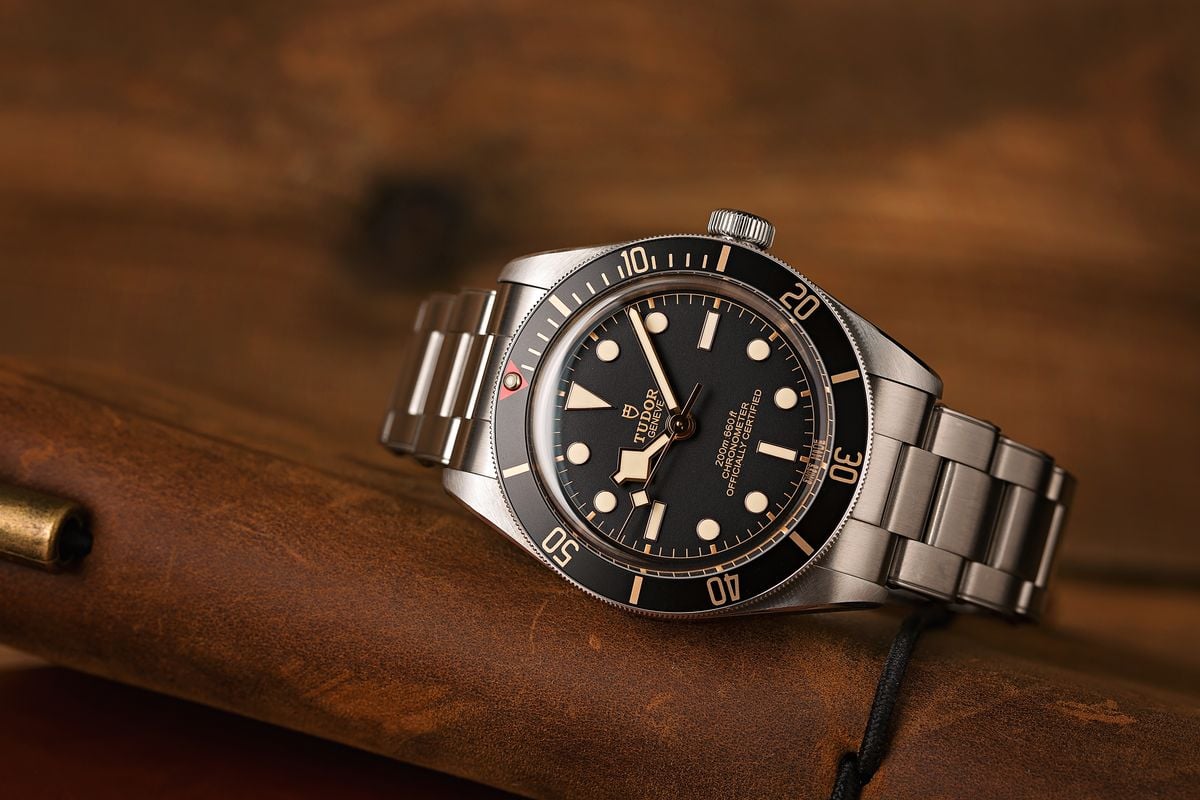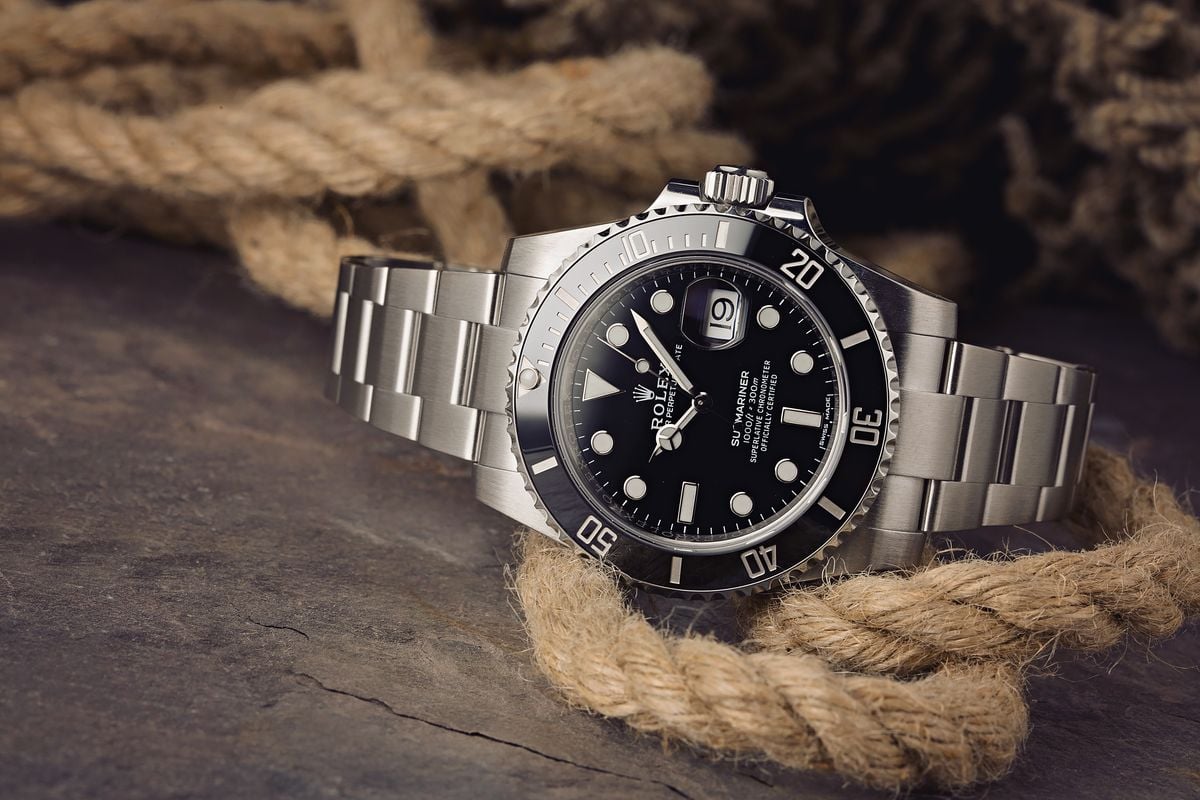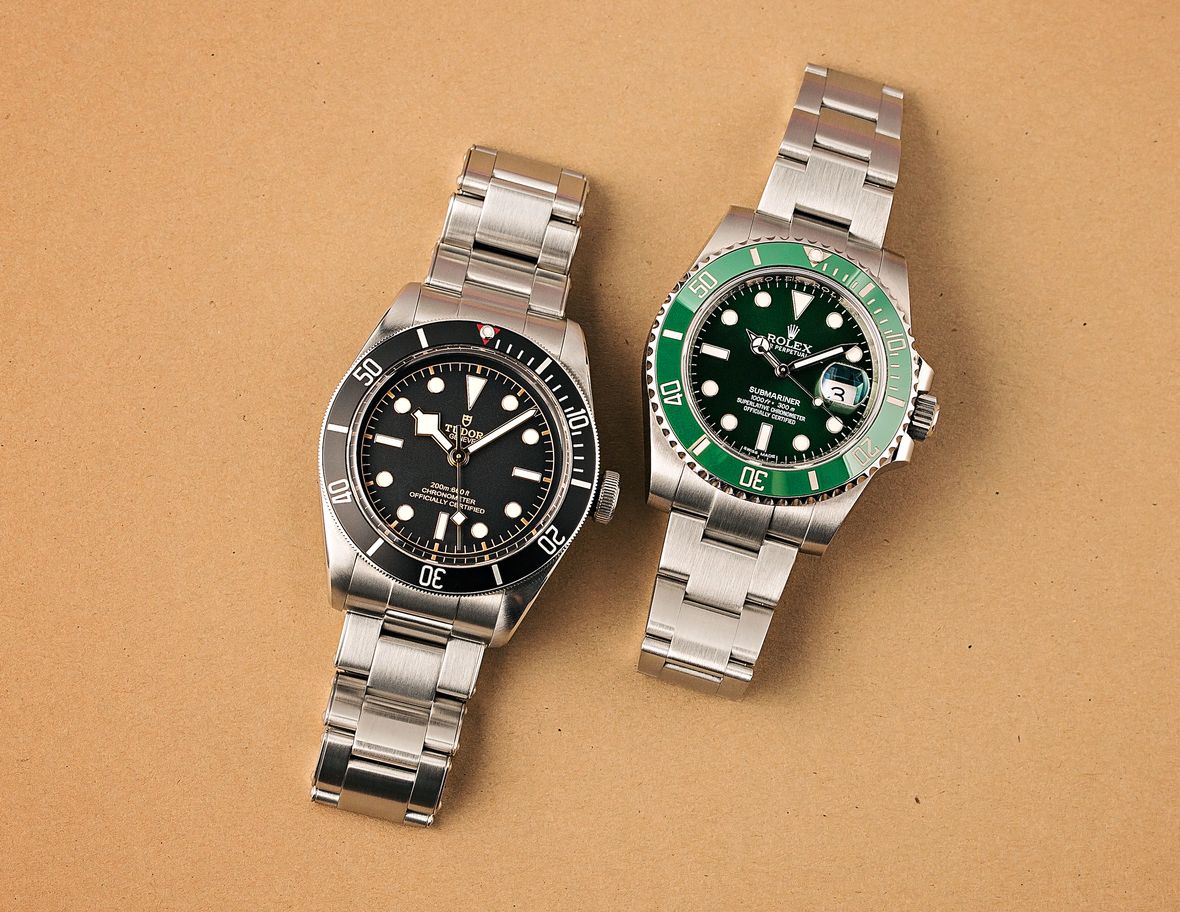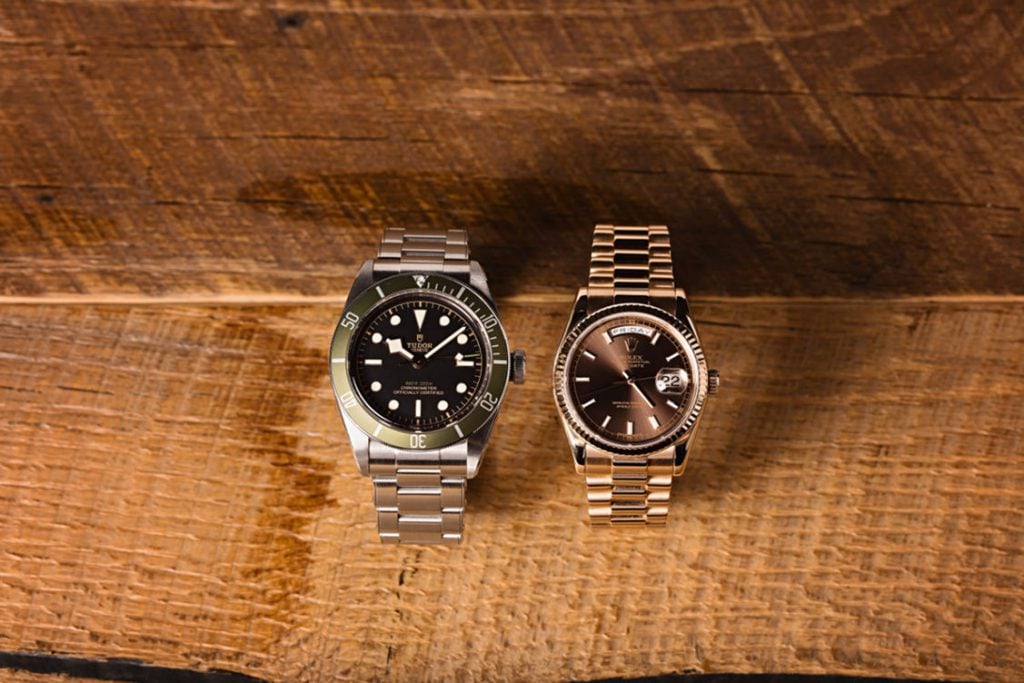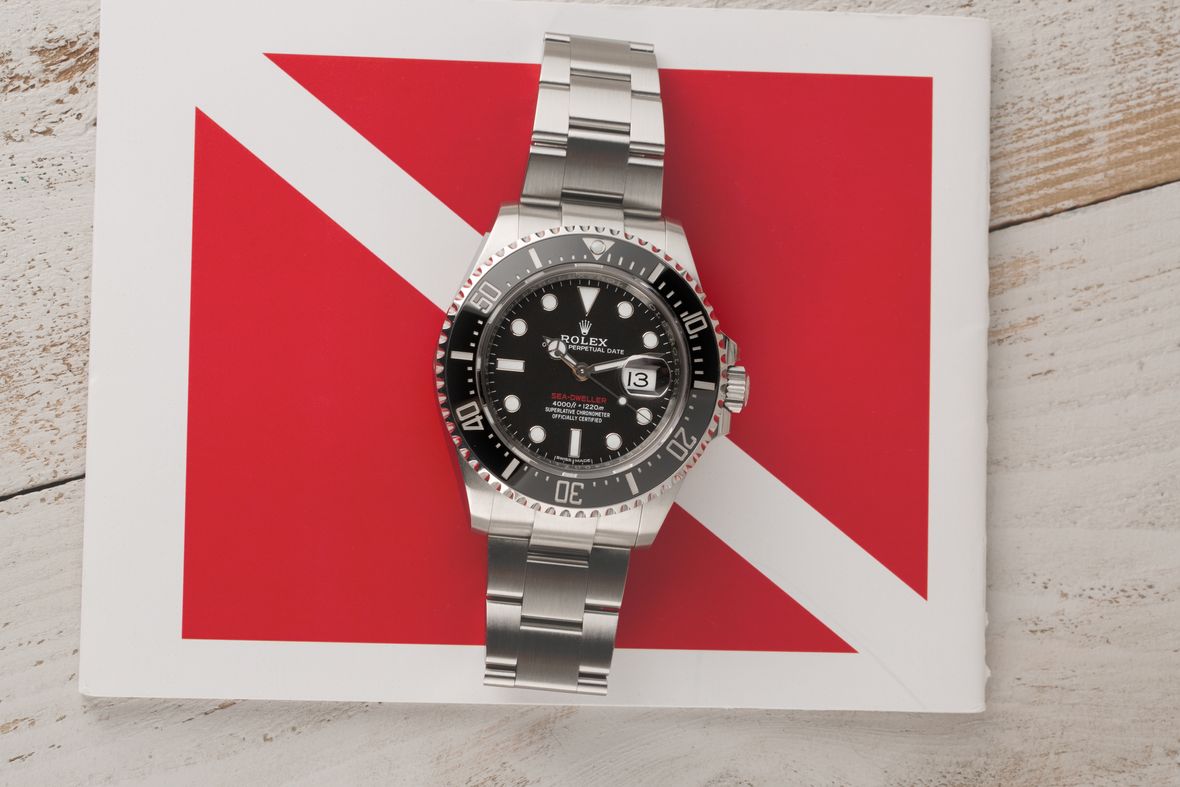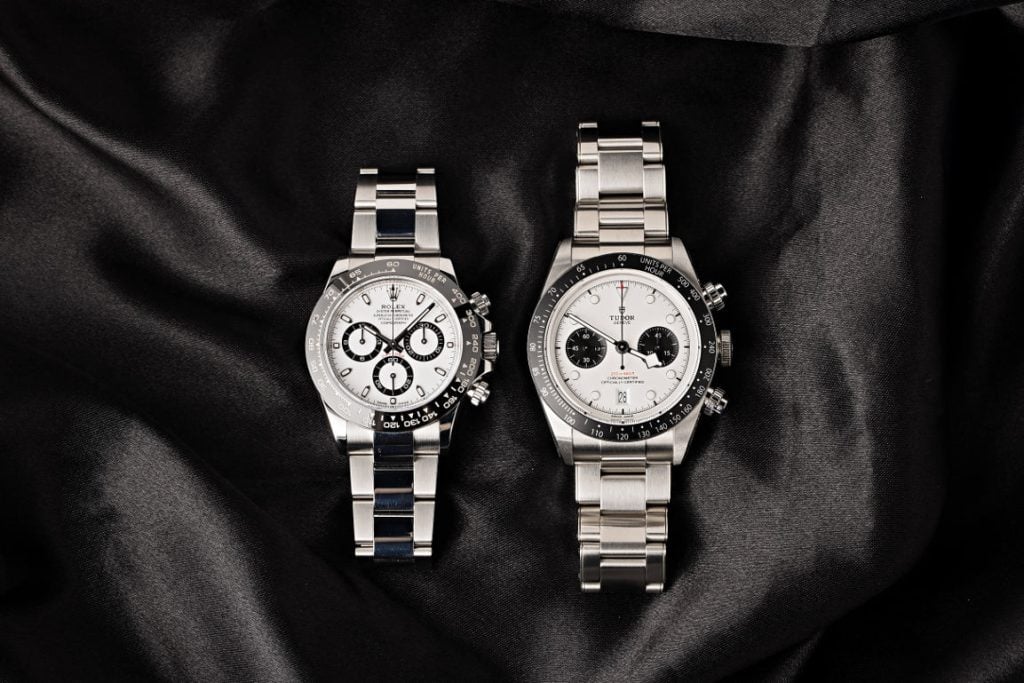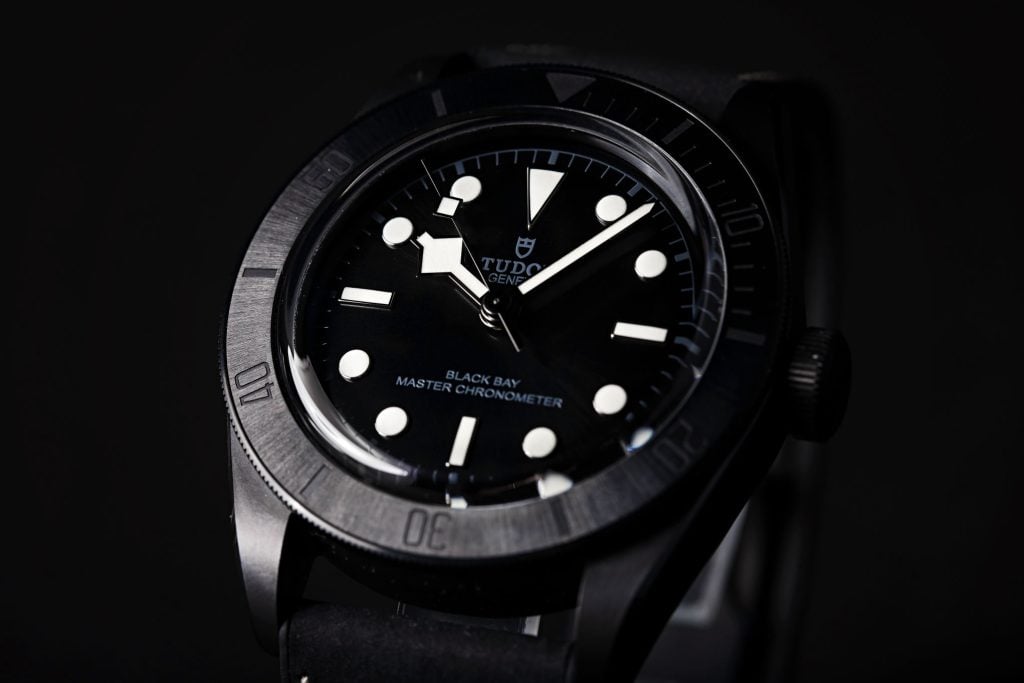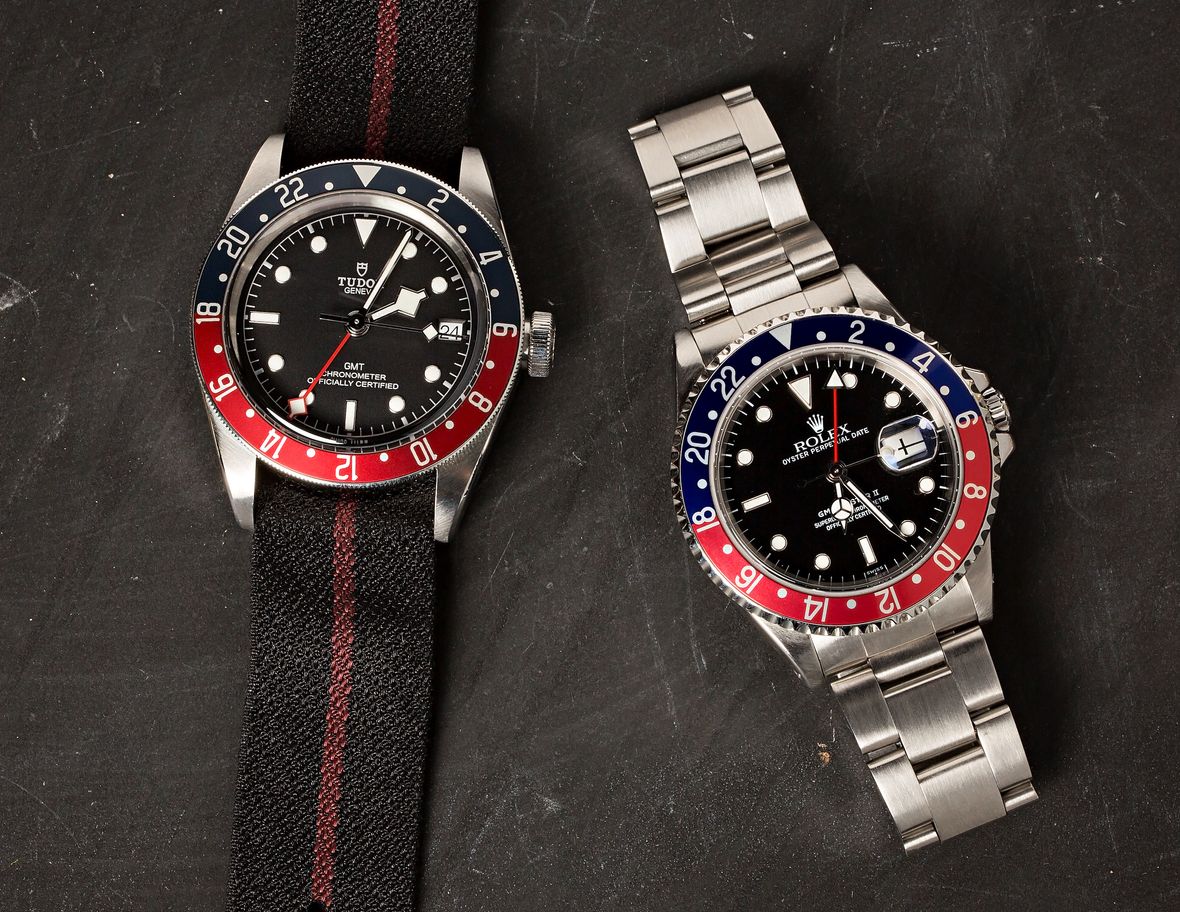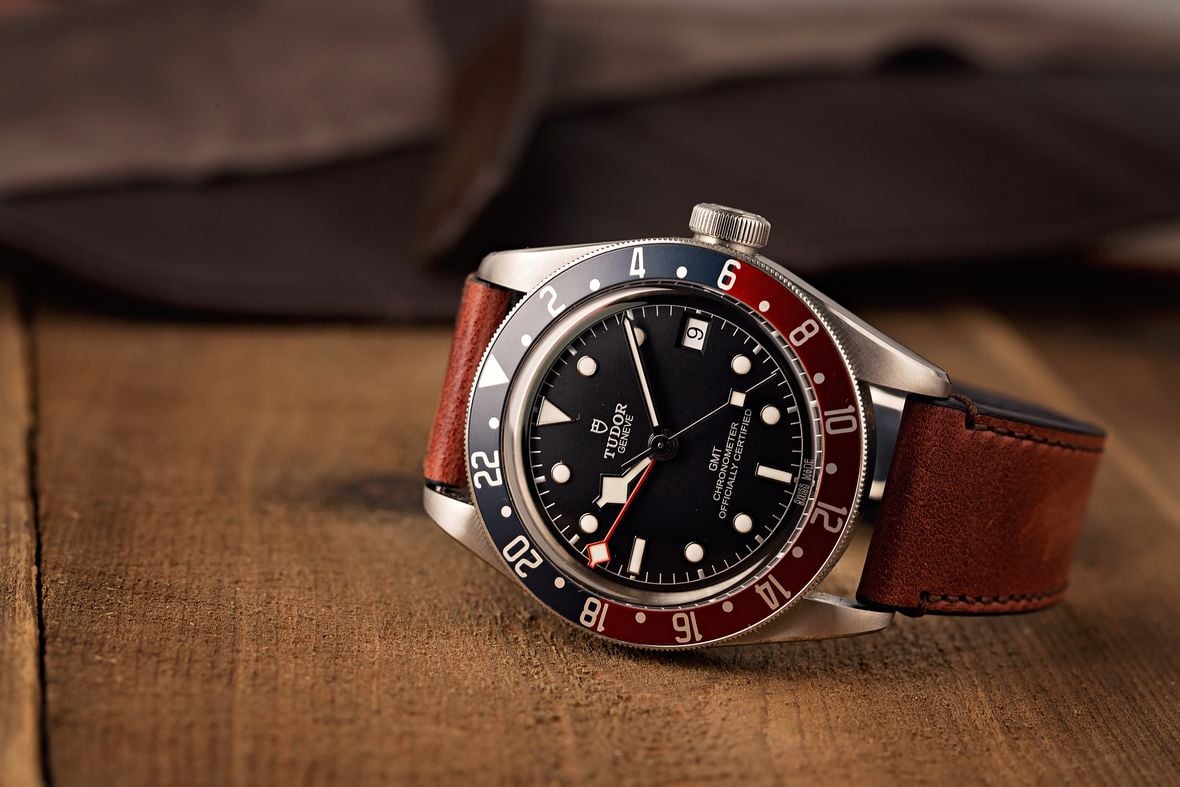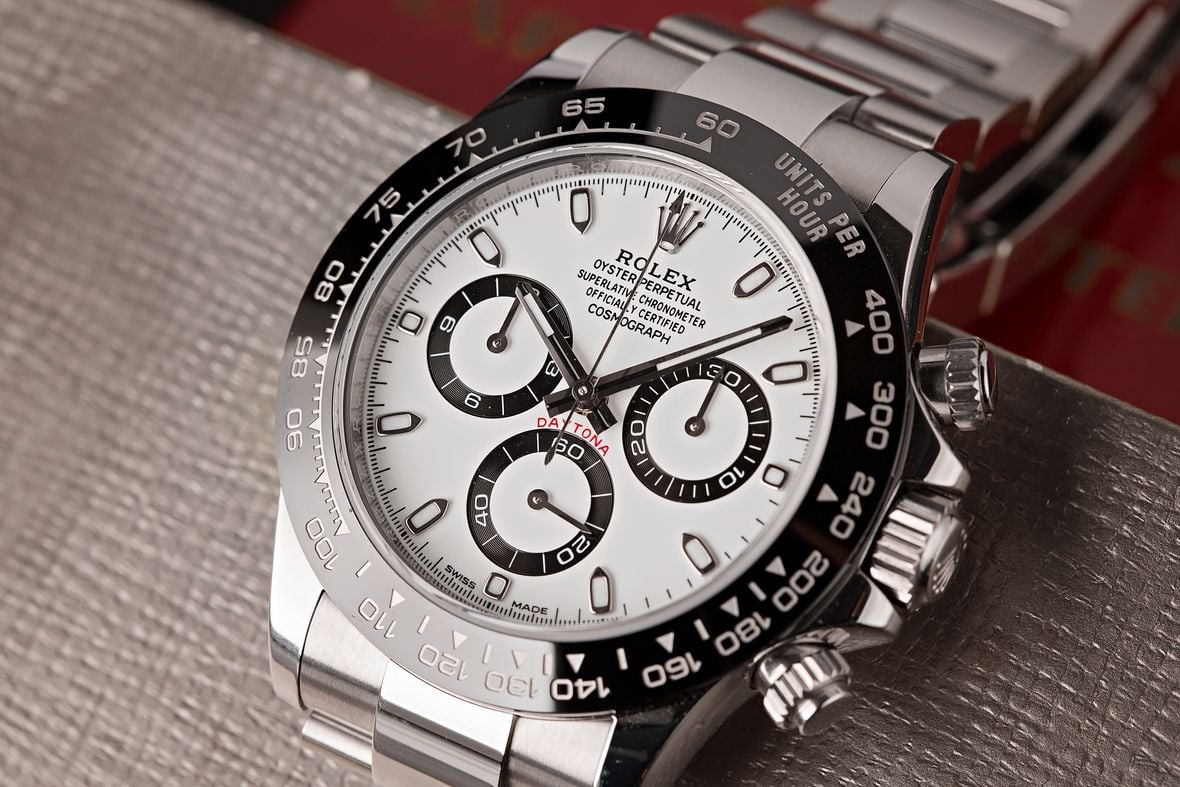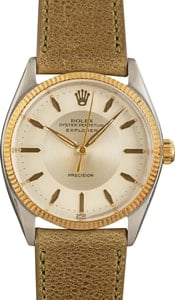It is only natural for siblings to measure themselves against each other. But when it comes to the age-old question of Tudor vs Rolex, there are few topics more hotly debated between collectors and enthusiasts. The two iconic Swiss watch brands have an intertwined history that dates all the way back to 1926. For most of that time, there has never really been much of a question about which company was number one. Rolex’s Founder, Hans Wilsdorf initially established Tudor as the more affordable sibling company to Rolex and for nearly a hundred years, Tudor has happily played second-fiddle to the flagship Rolex brand.
However, in the years that have followed its global relaunch, the Tudor luxury watch brand has firmly asserted itself as one of the world’s premier manufacturers in the affordable luxury segment. Tudor introduced its own in-house movements and tapping into its rich history for design inspiration. As Rolex luxury watch collections continue to get more expensive and the brand moves further upmarket towards an increasingly luxury-oriented segment of the industry, it has ultimately been Tudor that has taken over Rolex’s role. As the manufacturer of high-end pieces, Tudor watches are still within reach for the average consumer. People have been comparing Tudor to Rolex since the very earliest days of the brands’ histories, and with the most recent updates to Tudor’s catalog, the gap between these two legendary brands has never been smaller. So, without further ado, read on as we attempt to answer the age-old question of Tudor vs Rolex.
Tudor vs Rolex: Key Facts
Tudor Facts:
– Founded in 1926
– Headquarters in Geneva, Switzerland
– Owned by Rolex
– Originally created as the more affordable alternative to Rolex
– Supplied watches to US Navy and French Marine Nationale
– Brand re-launched in 2009
– Started producing in-house movements in 2016
Rolex Facts:
– Founded in 1905
– Headquarters in Geneva, Switzerland
– Owned by the Hans Wilsdorf Foundation
– Created the first waterproof watch in 1926
– First self-winding Perpetual movement in 1931
– Sold in more than 100 different countries
– Total production of approximately a million watches per year
– Sold in more than 100 different countries
Tudor vs Rolex: History
Ever since Tudor burst back onto the international watch scene, comparisons between it and its sibling company Rolex have abounded. The brands are (and always have been) intertwined. Tudor was founded in 1926 by Hans Wilsdorf, the man that brought us Rolex, which was initially established under the name Wilsdorf & Davis in 1905. Tudor was always intended as a more affordable watch option and enjoyed a rich history of its own until the brand wound down distribution in the early 2000s. The brand stopped sales of its watches in the United States completely, largely due to slumping sales and a loss of direction. However, that all changed with the brand’s relaunch, which started quietly in 2009, properly kicked off in 2010, and has continued to gather momentum ever since.
While Rolex is a brand that truly needs no introduction, its sister company, Tudor, is a bit less of a household name. For most of its existence, it has been (understandably) caught in the colossal shadow of its parent company Rolex, even though it is a favorite among many watch enthusiasts.
Since 2017, Tudor reinvented its image as a more youthful and style-focused brand. Tudor has brought on ambassadors such as David Beckham, Lady Gaga, and the New Zealand All Blacks rugby team. This strategy is in stark contrast to Rolex’s marketing focus. While Tudor places its ambassadors front and center of its current campaigns, Rolex prefers to lead with the watches themselves, while keeping their illustrious list of “testimonies” in the background.
However, despite Tudor being perhaps more style-conscious than its elder sibling, the watches in its current line-up are certainly fine timepieces. The mixture of a fashion-forward mindset and Rolex-derived quality has many collectors extolling Tudor as the thinking buyer’s choice. Plus, the difference in price (both in retail and on the pre-owned market) is considerable. Tudor’s flagship models such as the Tudor Black Bay and the Pelagos sell for roughly half of Rolex’s bread-and-butter models like the Datejust and Rolex Submariner. Considering that, it is fair to say the choice between the two is as difficult as it has ever been.
Since its creation, the Tudor brand has always intended to be a more affordable alternative to Rolex. Consequently, there has historically been a significant difference in the watches produced by these two brands – a direct result of Tudor’s lower price point. However, in more recent years, it seems that Tudor is aiming to bridge the gap that has historically existed between these two manufacturers.
Tudor vs. Rolex: Key Differences
Rolex initially built its now-legendary reputation on the shoulders of its robust and water-resistant Rolex Oyster case. In the past, Tudor was able to achieve its more modest price point by using generic movements and Rolex-manufactured case components. The mechanisms used in Tudor watches were more-or-less identical to those found inside timepieces from several other manufacturers. Their Rolex-manufactured cases ensured that they would still offer the same degree of water resistance and durability as their higher-priced siblings.
While humbler outsourced movements powered the earlier models that were released following Tudor’s major relaunch, 2015 saw Tudor introduce its first-ever in-house movement. The Cal. MT5621 debuted in the new Tudor North Flag model and since then, Tudor has equipped more and more models with in-house creations. Most impressively, the brand managed to do this without raising prices all that much.
Using in-house movements has added an extra dimension to the value proposition of Tudor watches like Tudor Ranger. Additionally, some other modern technologies such as scratch-resistant ceramic bezels, silicon hairsprings, and titanium cases are now making appearances on some of Tudor’s various models. These technologies allow the brand’s offerings to be just as technologically advanced as Rolex’s contemporary timepieces.
Tudor’s in-house movements and Rolex’s latest generation of 32xx series, in-house calibers have several similarities, despite being from “different” manufacturers. Both movements use variable inertia balances with non-magnetic hairsprings, both have bearing-mounted, bidirectional-winding rotors, and both offer power reserves of approximately 70 hours. Rolex’s in-house movements boast additional “Superlative Chronometer” certifications that promise accuracy beyond the COSC parameters of Tudor’s in-house movements.
However, with COSC tolerances being as tight as they are, any actual difference in real-world timekeeping is likely to be no more than a few seconds per day (at most). Several prominent collectors have expressed surprise upon finding that their Tudor timepieces keep time on par with their Rolex watches. Practically speaking, therefore, it is fair to say the movements and their performance are not as worlds apart as the retail prices may suggest.
Modern vs Vintage Aesthetics
Both the Rolex Sea-Dweller watch and the Tudor Pelagos are modern and technologically advanced, mechanical dive watches with a touch of vintage design inspiration. Both watches have self-winding, chronometer-certified in-house movements with 70-hour power reserves, and both have scratch-resistant ceramic bezel inserts and sapphire crystals.
On top of that, both watches are even fitted with helium gas escape valves, which makes these watches suitable for saturation diving applications. The Tudor brand Pelagos watch has a depth rating of 500 meters – less than half that of the Rolex Sea-Dweller. The Pelagos also boasts a full-titanium construction, a luminous bezel insert, and costs significantly less than half the price of the Sea-Dweller.
The red line of text on the dial of the reference 126600 Sea-Dweller is about as close to “vintage-inspired” as you will get with Rolex. However, since Tudor’s reappearance in the industry, that perception has started to dissipate in a big way. Tudor returned in 2010 with its nostalgia-heavy Heritage line, kicking off with the Chrono and expanding into the Pelagos and ultra-successful Tudor Black Bay watch collections.
Constructed from titanium and stainless steel, the Tudor Pelagos is a thoroughly modern watch that draws design inspiration from Tudor’s past. For example, the LHD pulls together a fantastic colorway of matte black, cream (for the dial printing, hour markers, and date-wheel), and the obligatory red line of text that one would hope to find on a vintage sports watch from the golden era of mechanical timepieces. Against the duller, gritter titanium case color, it is a chromatic triumph that looks thoroughly unlike anything you might expect to find in the Rolex catalog.
Tudor vs. Rolex: Similar But Different
Since Rolex and Tudor’s management are in lockstep, the two brands will never be in direct competition with one another. However, as Rolex occupies an increasingly more luxury-oriented position within the high-end timepiece market, Tudor is perfectly positioned to cater to the numerous buyers for whom a Rolex may now be slightly out of their price range.
These days, it is perhaps easier than ever before to observe these two brands’ shifting dynamics as they jostle to establish distinct positions in the market. For many years, the prices of Rolex watches were surprisingly static. However, it was clear that Rolex was keen to increase its prices in line with its snowballing reputation as the preeminent luxury watch label in the world.
While watches from brands such as Patek Philippe, Audemars Piguet, and Vacheron Constantin are generally more expensive and certainly more technically complex than Rolex watches. But in many cases, none of these luxury brands possess the same mainstream popularity or the pop-culture status that the glistening golden coronet of Rolex enjoys.
However, Rolex risked drawing the ire of those less affluent followers had it simply increased the retail prices without first lining the nest for a successor. With Rolex clearly planning on vacating the price segment that could be described as affordable luxury, it made perfect sense to bring along the Tudor brand to take its place. The modern iteration of Tudor now offers the market watches that are more akin to the wares that Rolex produced in its 1950s tool watch heyday. Indeed, the target demographic of the Rolex brand has been handed down to Tudor for it to serve.
Rolex knew it could not simultaneously elevate its pricing structure to an undeniably luxury level and hoped to drag its entire consumer base along for the ride. From a branding perspective, with an ever-present eye on reputational protection, it would make no sense to offer a wider collection with disparate pricing. As such, Rolex invested heavily – extremely heavily – in positioning Tudor as the “new-old” Rolex. The result? Both the affordable luxury watch segment and the mid-level luxury echelon are now being served by a pair of ideologically similar but stylistically distinct brands under the same umbrella.
Perhaps we should have expected nothing less than such a textbook execution of how to shift gears without losing out on the market left behind. Even still, the way in which Rolex exited its old territory while handing the baton to its younger sibling was as impressive a vanishing act as you’re ever likely to see in this industry.
A New Tudor Brand For A New Age
Rolex founder, Hans Wilsdorf, started the Tudor watch company. The vision of creating a brand that could offer the same standard of dependability for which Rolex was famous, but at a more modest and affordable price point. Today, nearly a full century later, Tudor is closer to realizing that vision than ever before. Tudor’s latest generation of watches with in-house movements is now just a couple steps behind the flagship offerings from its legendary parent company.
Tudor lacks Rolex’s universally recognized luxury connotations. Tudor is the Rolex for everyone (assuming “everyone” can afford to spend several thousand dollars on a mechanical wristwatch). Remember, Rolex made its name in an era where the very concept of a “luxury” watch was decades from being fully established and embraced. It was, as Tudor remains, a producer of high-quality, exceptionally reliable tools. Simply put, Rolex was built on the idea of real-world performance.
Diamond-encrusted Pearlmasters were a million miles from Wilsdorf’s original intention. He was so successful in establishing Rolex as the gold standard of watchmaking. It was almost inevitable for the perception of his brand to shift as the nature of mechanical watchmaking changed course in the wake of the quartz revolution of the 1970s.
Throughout those tumultuous times for the industry, Rolex remained unruffled. It too dabbled in quartz technology, with some of those now-forgotten pieces popular among pre-owned buyers that are hunting for unique vintage Rolex watch models that are emblematic of a pivotal time in the brand’s history. However, it wasn’t until the turn of this century that Rolex really started to separate itself from the rest of the pack.
Having outgrown its roots as an accessible manufacturer of high-end timekeeping tools, the brand needed Tudor to pick up the slack in the soon-to-be-vacated lower price point. Tudor duly delivered in 2018, showing up to Baselworld with armfuls of new and updated models, including the brand’s very first GMT watch. This managed to steal a few headlines from a particular Pepsi-bezel favorite from its big brother.
Those new Tudor watches like Black Bay Pro, completed the renaissance for a brand. This had seemed a little unsure of itself until its new identity had been compounded the year before by the shift in marketing strategy. The result? A brand that now has its own character and products distinct from its forerunner. For the first time in the brand’s history, Tudor had peered out from Rolex’s colossal shadow and seemed to realize its potential to make some serious headlines, while Rolex tolled away in a different stratosphere entirely. Additionally, it has reignited the age-old Tudor vs. Rolex question that has existed for decades.
Tudor vs Rolex : Which Is Better?
Back in the day, there was an easy answer to the question of Tudor vs Rolex. The Tudor name was registered by Hans Wilsdorf in 1926, as he attempted to set up a more affordable alternative to the premium arm of his watchmaking empire. The Rolex founder had been trying to start a viable sub-brand for years, establishing and quickly abandoning names such as Falcon, Genex, Lexis, Marconi, and Unicorn.
Tudor succeeded where the others failed for one key reason – Wilsdorf allowed them to be promoted as an actual Rolex product, while he had previously kept the other sub-brands as separate entities. This meant that the lower-priced watches could be sold by Rolex’s network of authorized dealers, but the core idea behind them all was the same. The Idea was “a Rolex watch for less than money than an actual Rolex”.
By 1946, Wilsdorf decided to cut Tudor free to operate on its own, registering the company as Montres Tudor S.A, a joint-stock business with all the shares owned by Rolex. The sanctioned use of Rolex’s patented Oyster case was the signal for Tudor to flourish. Tudor brand created more accessible versions of Rolex’s product lines such as the Oyster and Prince series, along with the Tudor Submariner ref. 7922, which was released just one year after Rolex’s Submariner watch line.
Tudor In-House Movements
The biggest difference until very recently, and the main reason for the gulf in price between the two brands, has always been Tudor’s use of third-party movements. Buying calibers, largely from Swiss ébauche manufacturers ETA or Valjoux, is cheaper than developing and building all your engines in-house as Rolex has long strived to do. It is no secret that Rolex makes some of the finest mechanical movements of any manufacturer and that prowess is reflected in the cost of its products. By comparison, Tudor’s calibers – being supplied from outside – has always lost the brand something in terms of bragging rights, keeping it out of the very top tier among collectors.
Additionally, it is the actual price of Rolex watches that has made them more desirable. Wearing a Rolex says that you can afford one, and with the name being synonymous with expensive luxury, you are tacitly displaying a hint at your net worth on your wrist. For some, the lower cost of a Tudor states that you really wanted a Rolex but couldn’t quite stretch to it – much in the same way that Porsche Boxster drivers probably actually wanted the 911. However, ever since Tudor’s reappearance in the industry following their mauling by the quartz crisis, that perception has started to dissipate in a big way.
Separate Brand Identities
Now, rather than being seen as the poor man’s Rolex, Tudor has forged its own identity, as a manufacturer that is not afraid to experiment with its designs and radical color schemes. Additionally, many of Tudor’s contemporary offerings are vintage inspired “Heritage” pieces, while Rolex’s watch designs only move forward, and the company makes a point of rarely drawing any inspiration from its past. Tudor is suddenly the bold and refreshing choice against the staid conservatism of its big brother.
Furthermore, that old argument of the company having to be supplied with mechanisms from elsewhere no longer really applies in 2015, Tudor launched its very first in-house movement (Cal. MT5621) inside the North Flag, and it hasn’t stopped there. That original in-house caliber has been repurposed across the portfolio, replacing many of the outsourced movements in other lines. Tudor has even created its own dedicated chronograph – not, as you might expect, by building on Rolex’s Cal. 4130 from the Rolex Daytona, but instead by adopting Breitling’s impressive B01 from its Chronomat and Navitimer collections.
Ironically, Tudor has become what many purists wish Rolex still was: a manufacturer of fine tool watches, without any status symbol posturing, diamond accents, or precious metal finery.
Tudor vs Rolex: Which Should You Buy
So, does this mean that Tudor is now better than Rolex? No. Rolex was and most likely will always remain better for the foreseeable future, the single most important watch brand in the world. Without Rolex’s countless watch innovations, the wristwatch as we know it probably wouldn’t exist, and the brand is still pioneering in many of the developments that are shaping the industry today. Rolex’s catalog is bursting with iconic models that even those with no horological interest whatsoever can recognize immediately, and the “Rolex” name is internationally associated with the very best of the best.
With that in mind, there is no doubt that the gap between Rolex and Tudor is smaller than it has ever been. The once second-fiddle manufacturer is now one of the very few watchmakers that can realistically compete with the granddaddy of them all, as evidenced by how much Tudor has tried to distance itself from its parent company. In the past, the brand played heavily on its connection to Rolex, which is understandable considering the global renown of its parent company. However, these days, Tudor is no longer content with its “almost as good” reputation and is actively working at being taken just as seriously.
Creating its own movements was the obvious final piece of the jigsaw, shrinking the divide even further. The levels of build quality, engineering prowess, and craftsmanship that goes into a Tudor watch are like that which goes into a Rolex. With one of the key disparities being Rolex’s use of 904L stainless steel, as opposed to the 316L steel that is used by Tudor (and pretty much every other high-end watch manufacturer). Therefore, given all that they have to offer, it certainly does seem like Tudor watches represent ridiculously good value for the money in comparison to their Rolex alternatives. So then, is it possible that we could be looking at some future classics in the current catalog?
Vintage Tudor watches have seen excellent growth within the last several years. Certain models, like the early Tudor Submariner watch references that we mentioned above, are getting close to their Rolex counterparts in price, and there is sometimes an added exclusivity factor with the Tudor examples.
In the end, Tudor and Rolex both manufacture some of the very best watches on the market in their respective price brackets. Rolex has an irreproachable history and a legacy that few other watch brands can touch. Conversely, Tudor is the more adventurous, the more avant-garde, and the value for money factor of its watches is exceptional.
When it comes to the age-old question of Tudor vs Rolex (as with many other comparisons in the watch collecting world), there is no definitive “best” – but rather the one that you prefer, based on personal preferences and budget. Whichever brand you decide to go for, you will be taking ownership of mechanical watchmaking at its very finest and will be receiving a high-end luxury watch. Both brands will bring you and subsequent generations many years of reliable timekeeping performance.

